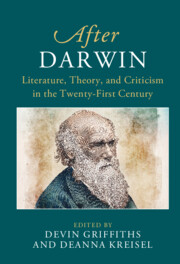Book contents
- After Darwin
- After Series
- After Darwin
- Copyright page
- Contents
- Figures
- Contributors
- Chapter 1 Introduction
- Part I Environments after Darwin
- Part II Differences after Darwin
- Part III Humanism after Darwin
- Chapter 11 Darwin’s Human History
- Chapter 12 Conscience after Darwin
- Chapter 13 Darwin, the Sublime and the Chronology of Looking
- Chapter 14 Instinctive Moral Actions
- Chapter 15 Darwinian Analogies in Thinking about Art and Culture
- Afterword
- References
- Index
Chapter 11 - Darwin’s Human History
from Part III - Humanism after Darwin
Published online by Cambridge University Press: 01 December 2022
- After Darwin
- After Series
- After Darwin
- Copyright page
- Contents
- Figures
- Contributors
- Chapter 1 Introduction
- Part I Environments after Darwin
- Part II Differences after Darwin
- Part III Humanism after Darwin
- Chapter 11 Darwin’s Human History
- Chapter 12 Conscience after Darwin
- Chapter 13 Darwin, the Sublime and the Chronology of Looking
- Chapter 14 Instinctive Moral Actions
- Chapter 15 Darwinian Analogies in Thinking about Art and Culture
- Afterword
- References
- Index
Summary
In The Descent of Man, Charles Darwin sought to erase the hard border between humans and other animals. Attempts to define a human exception within nature persist, however, among evolutionary anthropologists as well as in popular histories of the human species. Darwin proposes a cultural rather than biological perfection of “humanity” through an evolution of the moral sense or conscience, which takes the form of a deliberative expansion of the sympathetic imagination to embrace other nations and races and, eventually, all sentient life. At the same time, Darwin predicts a future widening of the extinction gap between a more highly evolved human type and “lower” races and species. Extermination, seemingly at odds with a universal sympathy, provides its historical condition. The crux informs subsequent accounts of a revolutionary rather than evolutionary stage of human emergence, in which the enhancement of Homo sapiens’ social intelligence entails the extermination of other human populations.
- Type
- Chapter
- Information
- After DarwinLiterature, Theory, and Criticism in the Twenty-First Century, pp. 137 - 150Publisher: Cambridge University PressPrint publication year: 2022

